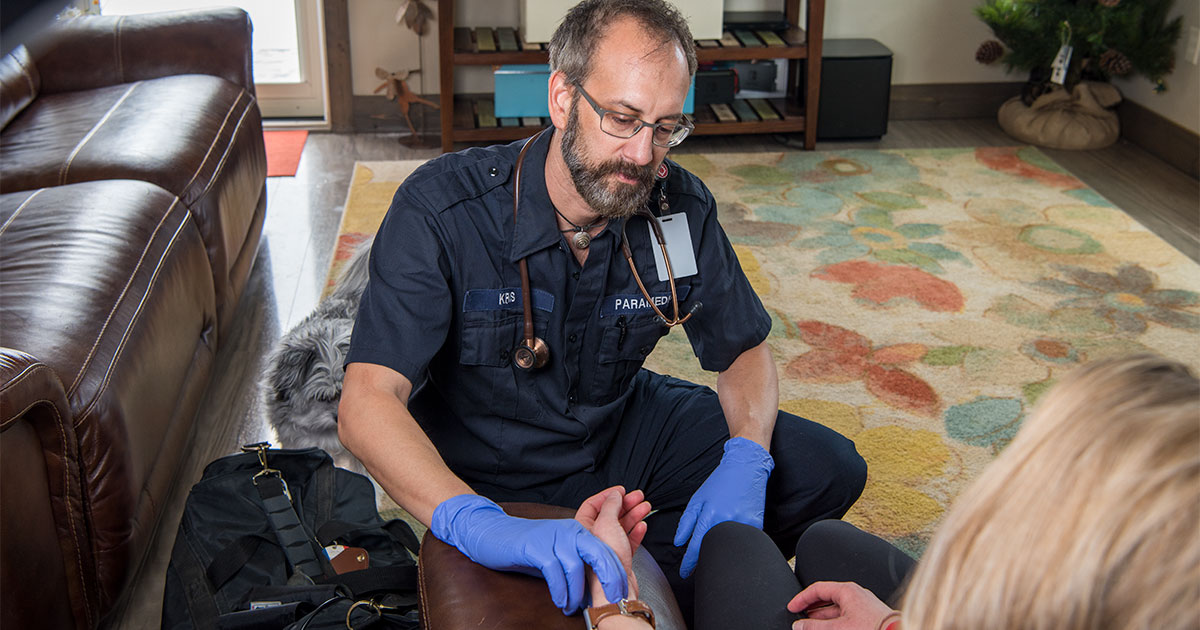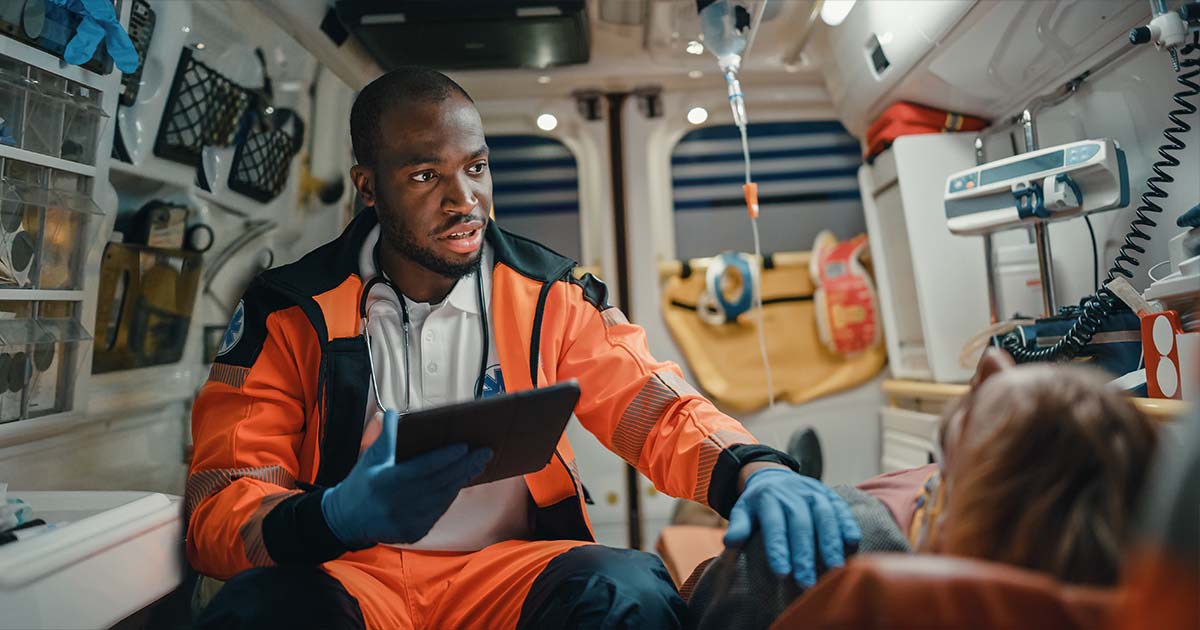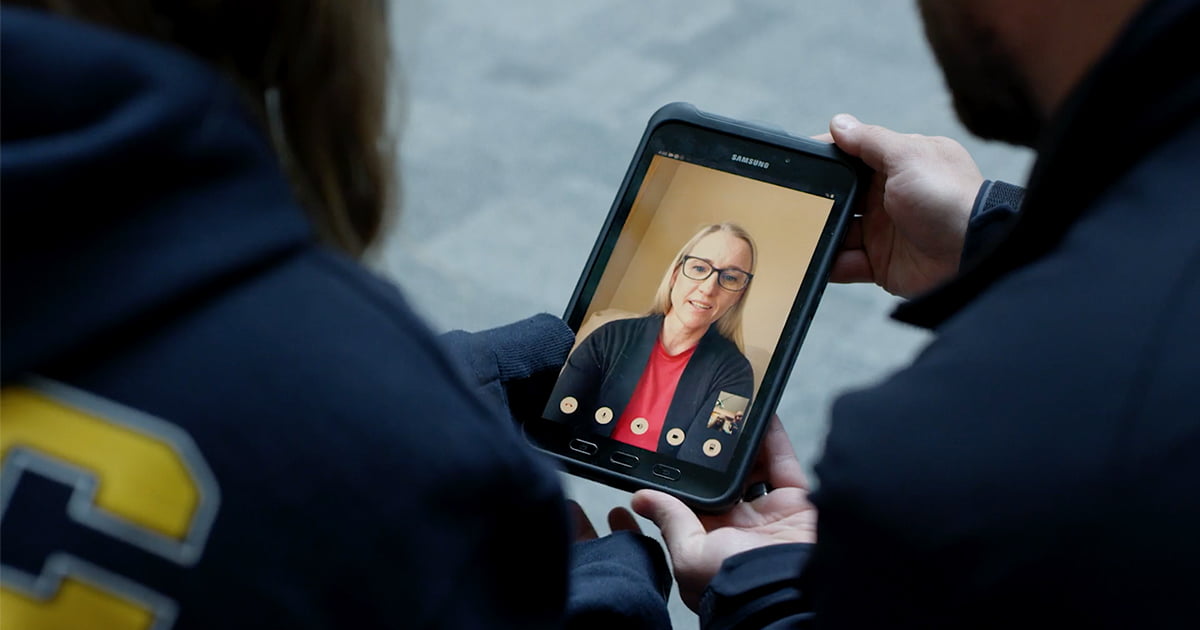Baker to Vegas: Leveraging Pulsara to Manage a Planned Event
Although they have the advantage of prior awareness and preparation, large-scale planned events pose unique challenges for emergency management...

EDITOR'S NOTE: This article originally appeared on EMS1.com. Special thanks to our guest author, Carol Brzozowski, for EMS1 BrandFocus.
__
Keep these measures in mind to help maximize providers’ safety
By any standard of mental and emotional health you might choose, Americans are struggling right now.
The advocacy group Mental Health America reported in 2022 that the number of Americans seeking mental health screening in 2021 represented an increase of nearly 500% over the total in 2019 – a rise it attributed largely to stresses of the COVID-19 pandemic.
During that year, MHA found that more than three-quarters of those who took its screenings either tested positive or showed moderate to severe symptoms of a mental health condition. Young people, in particular, seem to be struggling with emotional, attentional and behavioral challenges, and the organization found significant increases among those at risk for post-traumatic stress disorder, severe anxiety and psychotic-like experiences. The percentage reporting frequent thoughts of suicide and self-harm was the highest ever recorded.
Even before the pandemic, more than 46 million Americans dealt with mental illnesses of various severities, with up to nine million enduring illnesses marked by severe psychosis. Since the pandemic, it’s worse.
“The information we have now about the impact of COVID-19 on the world’s mental health is just the tip of the iceberg,” Dr. Tedros Adhanom Ghebreyesus, director general of the World Health Organization, said in early 2022. “This is a wake-up call to all countries to pay more attention to mental health and do a better job of supporting their populations’ mental health.”

Beyond the obvious risk of contracting the virus, this impacts EMS providers in several other potentially troublesome ways. One, in terms of raw numbers, they’re facing more patients living with mental and emotional illnesses. Two, as with physical problems, many people had their needed care interrupted during the pandemic, compounding the challenges they already faced. And the problem of more patients with adverse conditions comes at a time when many EMS systems are struggling to fill vacant positions.
Taken together, this amounts to a greater risk of physical conflict and danger to crews in the field. And for some, the worst may be yet to come.
In November 2022, New York City Mayor Eric Adams announced a major effort to remove people living with severe, untreated mental illnesses from the city’s streets and subways. Under his plan, police and other first responders will have to forcibly take those displaying severe symptoms to hospitals, even against their will. Critics anticipate a potential for violent resistance.
Whatever the disposition options in your system for patients with severe mental illness, these calls can be perilous. Here are some tips for those throughout 9-1-1 and EMS systems to improve the safety of such responses.
While mental health conditions can’t always be predicted or foreseen, there are many people with known diagnoses and documented behaviors about which responders can be forewarned. When a person has encountered the 9-1-1 system before, dispatch systems may be able to flag names and addresses and provide advance information to crews before subsequent responses.
In many places, citizens aware of their loved one’s condition can also provide this information in advance for purposes of forewarning responders. Cities like Seattle and Denver have established programs where the public can update 9-1-1 call-takers with critical details like mental health concerns and known medications.
As an example, consider a patient with autism who doesn’t react well to loud noises. If they have this information in advance, responders can quiet their sirens as they approach this patient’s address, thus avoiding provoking a negative response. Perhaps they can even send alternative or dedicated autism resources if their system has them. In their interactions with the public, EMS providers should encourage such advance consideration of potential issues.
When such information comes to one segment of the emergency care system, it must also be shared. Health care systems must break down silos that impede the sharing of such information as allowed by law.
Can an EMS provider’s uniform deter violence? Perhaps. Some EMS advocates feel outfits that too closely resemble those of police can confuse patients about whether a responder is there to assist them or arrest them. A strong visual distinction may clarify things for those who are in crisis or confused.
Additionally, those who show aggression against EMS providers may need to be restrained. Police have handcuffs, but in medical instances, EMS may also employ physical or chemical restraints. Whatever potential restraints you choose, make sure protocols for their use are clear, coordinate well with police and train EMS providers thoroughly on them.
Against the threats of gunfire and edged/bladed weapons, many departments are also implementing body armor. These come in a range of protective levels, so consider what balance of cost, comfort and protection is right for your agency.
Whether a call starts benignly and then escalates or is antagonistic from the get-go, there is value in knowing techniques to de-escalate. There are lots of sources where providers can learn this (and check with your local PD), but such training usually involves components like active listening, understanding and validating a subject’s concerns, and maintaining a calm environment that doesn’t further trigger or inflame someone already on edge. Verbal judo is one effective approach to gently persuading someone who’s reluctant.
One veteran EMS leader swears by the phrase, “Let me see if I understand you correctly.” Using this statement and then calmly restating a patient’s concerns back to them tells them you’ve listened and can create a sense of alliance. Active listening can disarm anger, fear and confusion and open the door for a more productive two-way conversation.

Organizations like the National Alliance on Mental Illness and other experts offer tips for interacting with patients who live with mental and emotional conditions that can yield more fruitful outcomes. These typically include talking in quiet, comfortable spaces and at tones that won’t further agitate; being straightforward and nonjudgmental; practicing active/reflective listening; demonstrating respect and compassion; and establishing common ground. There are also statements and actions to avoid – anger and condescension will not be productive.
With many difficult patients, a call’s tone can go from positive to negative in a flash. Keep your spidey senses on high. Know the escape route you’ll use if you need it; keep that path clear. Keep some distance between you and the patient, and don’t turn your back. Be prepared to exit the scene and/or call for help if things go south.
EMS providers are among the most trusted people in society. Their words have impact. When they encourage health and wellness and step up with compassion and assistance for those in distress, it’s powerful and can spur cooperation, even where police may be seen in a more adversarial light.
Urge people to get themselves and their loved ones the help they need. Encourage protective measures like notifying responders of patient conditions. Share important information like the creation of the new 9-8-8 mental health emergency number. As the frontline interface of medicine and the masses, EMS providers can fulfill an authoritative role in promoting education and best practices.
To assist EMS workers in their quest to help those with behavioral health disorders, Pulsara – a secure, HIPAA-compliant telehealth, communication and logistics provider whose platform unites care teams and technologies across organizations during dynamic events – recently released a dedicated behavioral health patient type. This is intended to help EMS crews, hospital teams, crisis counselors and other health care organizations better support mental and behavioral health patients.
Using the platform, EMS and other first responders can directly connect with behavioral health facilities, teams or individuals through live group video and audio calling to receive help in determining the most appropriate treatment for their patient.

First responders can scan the barcode on any U.S. driver’s license and automatically populate the patient’s name, age, date of birth and gender into a Pulsara patient channel.
Community paramedics or other clinicians can quickly assemble a team based on the situation’s demands, including expert mental health providers, emergency medicine physicians and medical control. Specialists can connect with patients to perform a psychological evaluation or conduct a crisis counseling session via telehealth.
Additional benefits enable EMS and hospital teams to bypass the emergency department for patients who need psychiatric beds. Minor cases can be de-escalated, enabling EMS teams to treat in place when possible.
For patients at the emergency department or hospital who need more specialized resources elsewhere, Pulsara’s behavioral health patient type helps clinicians find the most appropriate placement.
What does it take to build a system of care that scales? Eric Epley, Executive Director of the Southwest Texas Regional Advisory Council (STRAC), and Corey Ricketson, Pulsara's Sales VP - Texas, discuss the benefits of using the same communication platform for everyday patient transports, transfers, and transitions of care and stress events. Watch the webinar here!

Although they have the advantage of prior awareness and preparation, large-scale planned events pose unique challenges for emergency management...

For Those Who Love a Good "Oopsie!" At Pulsara, we pride ourselves on enabling secure, HIPAA-compliant communication for healthcare teams. But let’s...

March Recap A New Integration: Improving Data Management, Streamlining Workflows, and Improving Care CoordinationOnly a few days ago, we announced...